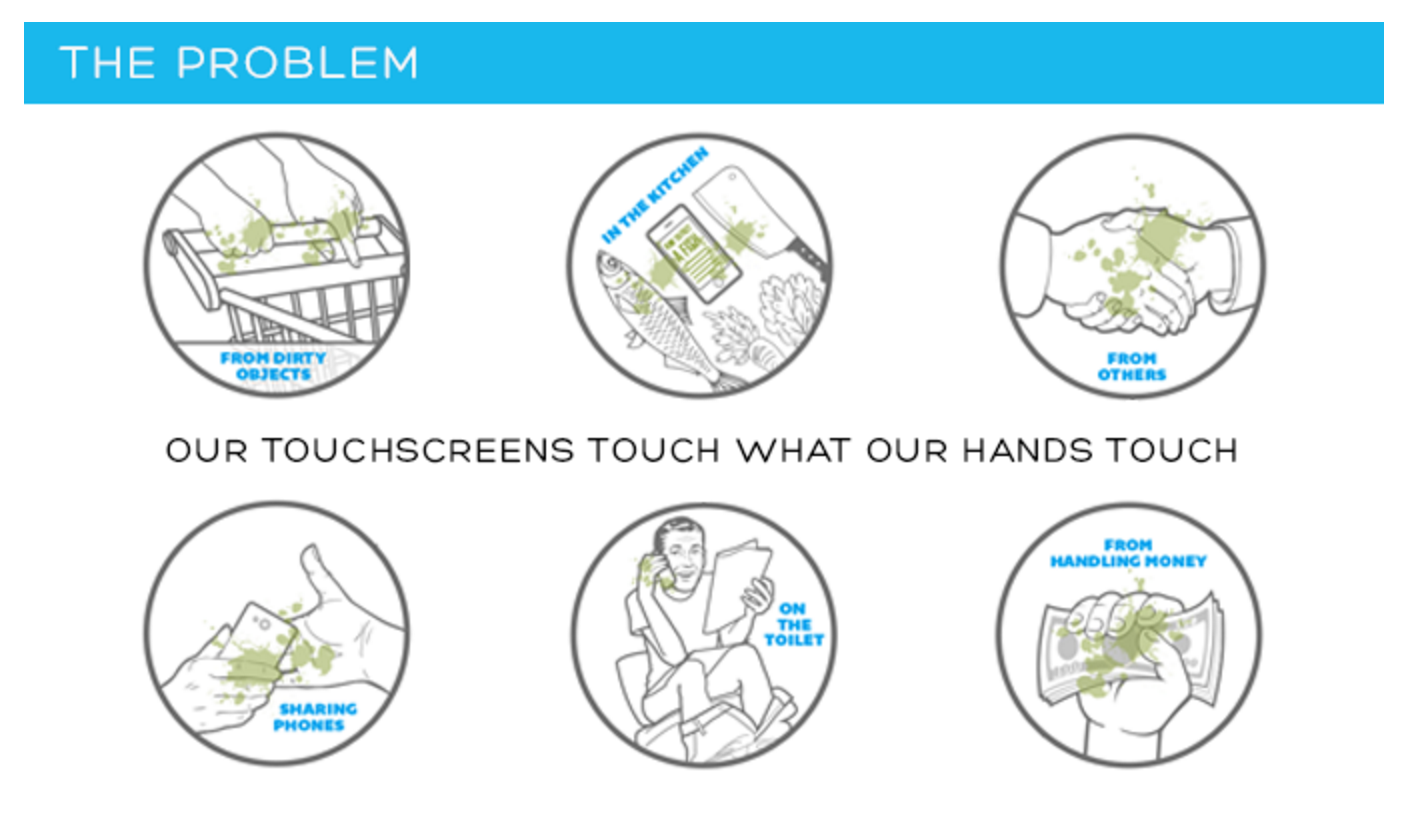Do you ever put your cheek against the lukewarm ceramic of a public toilet? Have you ever put an uncooked chicken breast up to your ear?
If you’re contorting your face in disgust or just plain confused, get ready. Something you put next to your face and touch regularly is likely to be caked in E.coli, salmonella, flu germs, and fecal matter. Yep, your phone is disgusting. In fact, it’s 18 times dirtier than that public restroom.
“It’s really like a petri dish in your pocket,” said PhoneSoap Co-Founder Dan Barnes. “We feel like it’s only gotten worse as people use their phones in more and more places. Because cell phones are warm and always on, the bacteria can actually grow.”
This prompts a question not for the squeamish: how often do you actually clean your phone?

Barnes’ company, Utah-based PhoneSoap, wanted to help get mobile devices squeaky clean. His cousin and co-founder, Wesley LaPorte, was doing medical research in a lab that sterilized instruments with UV light and the two had a eureka moment. Why not use the UV-C wavelength that sterilizes medical equipment to clean phones?
In 2012 the cousins launched a Kickstarter campaign to create PhoneSoap, a 1.9 × 4.95 × 6.95 inch universal charging box and UV-C cleaning case for smartphones. The campaign raised over $63,000 and PhoneSoap has since sold nearly 100,000 units. The cousins also pitched investors on the television show “Shark Tank,” receiving a $300,000 investment from co-host Lori Greiner for a 10 percent stake in the company.
“Everything we touch, we transfer to our phones,” Barnes said, adding that one in six phones have fecal matter on them. “They’re rubbing all that bacteria against their face, which is why a lot of teenagers are seeing [acne] worse.”
Phone’s latest product and flagship model is PhoneSoap 2.0, which fits an iPhone 6 Plus as well as several other devices. The device also has acoustic outlets so users can hear notifications and alarms when the phone is inside the box.
The PhoneSoap box is equipped with two 254nm UV-C lights that kill 99.9% of bacteria and viruses—the short wavelength can penetrate the cell wall of a bacteria, disrupt its DNA and kill the bug. It takes three to five minutes to disinfect a phone, Barnes said, the UV-C lights are automatically turned off after the cleaning process is finished. Because UV-C doesn’t cause heat, it won’t fry your iPhone.
UV-C doesn’t repel bacteria for a lasting clean, so Barnes recommends using the charger/cleaner once a day, or “maybe twice if you’re on an airplane.” No one wants to think about the germs crawling all over a jumbo jet (if you’re curious, the seatback tray table is the dirtiest place on an airplane).

PhoneSoap isn’t the first non-medical company to recognize the potential of UV-C for the consumer market. Companies such as Verilux have designed UV-C sanitizing vacuums and wands, though none are specifically designed for smartphones or offer simultaneous charging capabilities.
BioArmor and NueVue have developed antimicrobial screen protectors and sleeves, respectively, for smartphones. NueVue’s sleeve has “BioCote antimicrobial technology” that scrapes away bacteria when a phone is placed inside the protective sleeve, while BioArmor’s tempered glass screen shields have “silver ion technology” that kills germs and bacteria. PhoneSoap has hopped on the screen-saving trend with an antimicrobial polish that also prevents smudges.
As consumers move toward larger phones and carry multiple devices, cleaning tech has to get bigger. PhoneSoap just ended a second Kickstarter campaign for a tablet-sized box with four UV-C lights, which pushed the power threshold and made charging three devices prohibitive. The PhoneSoap XL, which ships in March 2016, will have one USB port on the back of the device for fast charging of iPads up 2.4 Amps.
Barnes is also thinking beyond iPad Pros.
“We thought about going broader beyond just electronics, like [sanitizing] sponges and other things that get filthy,” he said. Barnes also envisioned a locker that will store, charge and sanitize up to eight devices simultaneously.
Prices must come down before PhoneSoap can make such a device, Barnes said. PhoneSoap 2.0 runs about $60 and the XL version will be just over $100.
“The lights themselves aren’t cheap and we use special quartz [sleeve] inside, a special glass that allows UV-C to pass through it on a plate,” he said. “And each product has multiple lights.”
In the meantime, don’t toss a wet sponge in your PhoneSoap XL but feel free to put your house keys, keyboard or headphones in for a quick clean. But don’t try to stick your hand in a PhoneSoap product, Barnes said—while five minutes under UV-C light won’t hurt you, the long-term effects of UV-C exposure are unknown.